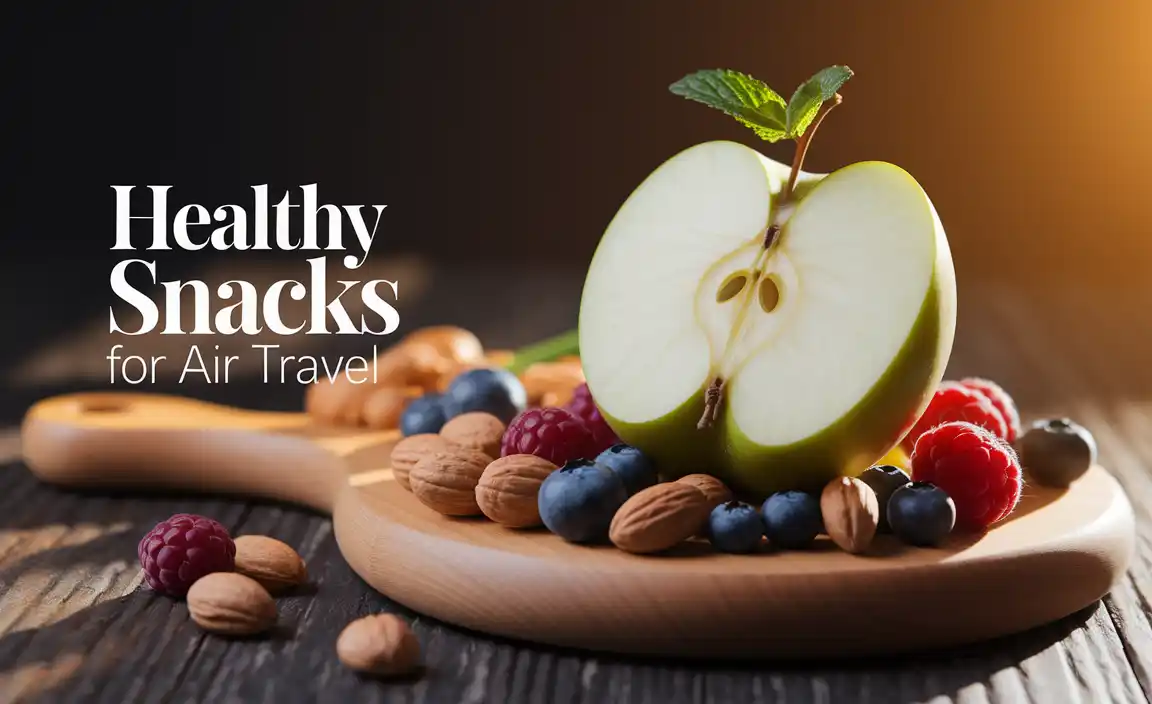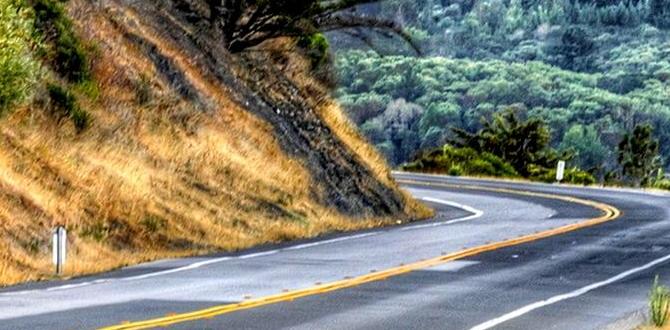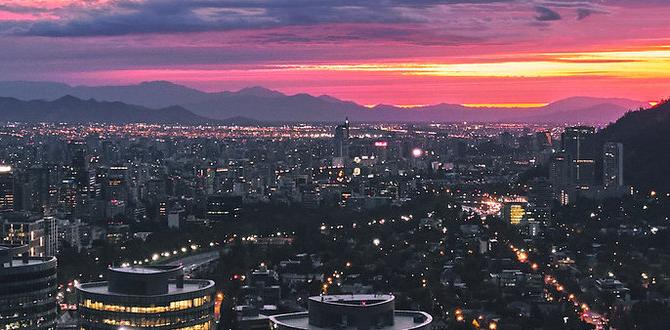Embark on a delicious self-guided food tour of Bogota, exploring its most essential and iconic dishes with ease. This guide provides a simple, step-by-step plan to savor the capital’s vibrant culinary scene, ensuring you taste the best without a fuss.
Welcome to Bogota! This bustling South American capital is a feast for the senses, and its food scene is no exception. Sometimes, navigating a new city’s culinary landscape can feel a bit overwhelming, especially when you want to discover those authentic, must-try local flavors. Where do you start? What are the absolute essentials?
Don’t worry, I’ve got you covered. Think of this as your friendly roadmap to tasting Bogota, one delicious bite at a time. We’ll break down the must-try dishes and how to find them, making your food adventure stress-free and incredibly rewarding. Get ready to discover the comforting, the surprising, and the utterly delicious heart of Colombian cuisine.
Your Bogota Self-Guided Food Tour: A Delicious Adventure
Exploring Bogota’s food scene on your own is a fantastic way to immerse yourself in the local culture. It’s about more than just eating; it’s about experiencing the city’s history, its people, and its vibrant street life through its flavors. Forget complicated itineraries and crowded tours; we’re focusing on the core tastes that define Bogota. This guide is designed for anyone who loves good food and wants to explore at their own pace, ensuring you hit all the essential culinary marks.
Bogota, Colombia’s vibrant capital, offers a culinary journey that’s as diverse as its landscapes. From the high-altitude chill of the Andes to the bustling city streets, its food tells a story of tradition, innovation, and incredible flavors. For the independent traveler, a self-guided food tour is the ultimate way to discover these authentic tastes. It allows you to linger over a delicious pastry, chat with a street vendor, or simply enjoy a hearty meal at your own rhythm. This guide is your essential companion for experiencing the soul of Bogota, one bite at a time.
Why a Self-Guided Food Tour?
A self-guided tour offers unparalleled freedom and flexibility. You decide where to go, what to eat, and how long to spend at each spot. This approach is perfect for those who want to savor every moment, discover hidden gems, and tailor their experience to their own tastes and pace.
Unlike organized tours, you set the schedule, allowing for spontaneous detours and deeper exploration of neighborhoods that catch your eye. Plus, it’s often a more budget-friendly option, letting you enjoy authentic local eats without the premium of a guided group.
Essential Bogota Bites: What You Absolutely Must Try
Bogota’s culinary identity is rich and varied. While the city boasts many international influences, its heart lies in traditional Colombian dishes. We’ll focus on the iconic flavors that provide a true taste of the capital. These are the dishes that locals love and that represent the heritage of the region.
1. Ajiaco: The Heartwarming Soup
The undisputed king of Bogota’s traditional dishes is Ajiaco Santafereño. This hearty, soul-warming soup is a must-try, especially on a chilly Bogota evening. It’s a complex and delicious dish, perfect for understanding local comfort food.
The soup is made with three types of potatoes native to the region – criolla, pastusa, and sabanera – which give it a unique creamy texture and distinct flavor. These are slow-cooked with shredded chicken and corn on the cob. The magic truly happens when you add the herbs and garnishes: fresh cilantro, capers, and a dollop of heavy cream. A slice of avocado on the side is the perfect finishing touch.
Where to Find the Best Ajiaco:
- La Puerta Falsa: A historic restaurant in La Candelaria, famous for its traditional Colombian cuisine, including an excellent Ajiaco.
- Andres Carne de Res (various locations, including DC): Although known for its vibrant atmosphere and grilled meats, their Ajiaco is also highly regarded.
- Comedores (Local Eateries): Look for local spots called ‘comedores’ or ‘corrientazos’ for an authentic and affordable bowl of Ajiaco, especially during lunch hours. These are often found in less touristy neighborhoods.
2. Empanadas: The Perfect Grab-and-Go Snack
Empanadas are loved throughout Latin America, but Bogota’s version has its own charm. These fried (or sometimes baked) turnovers are typically filled with seasoned ground beef or chicken and potato. They are incredibly versatile and make for a fantastic quick snack as you explore the city.
What makes Bogotan empanadas special is their texture – often crispy on the outside and fluffy on the inside. They are usually served with ají, a spicy salsa that perfectly complements the savory filling. Don’t be shy about trying them from street vendors; they are often the freshest and most authentic!
Tips for Enjoying Empanadas:
- Buy them hot: Always opt for empanadas fresh from the fryer for the best crispy texture.
- Pair with Ají: Don’t forget to drizzle your empanada with the local ají (spicy salsa) for an extra kick.
- Variety matters: While beef and chicken are common, you might find other fillings like cheese or even sweet versions.
3. Bandeja Paisa: A Feast for the Brave
While originating from the Antioquia region, Bandeja Paisa is a popular and hearty dish found across Colombia, including Bogota. This is not for the faint of heart or stomach! It’s a massive platter featuring a variety of delicious components, designed to be a complete, filling meal.
A traditional Bandeja Paisa typically includes: red beans (frijoles), white rice, chicharrón (fried pork belly), ground beef, plantain (maduro or patacón), chorizo, a fried egg, and an arepa. It’s a true culinary marathon, and sharing is often recommended!
Finding Your Bandeja Paisa:
- Traditional Restaurants (Piqueteaderos): Seek out restaurants specializing in traditional Colombian cuisine, often called “piquetaderos,” which are known for serving large, hearty platters.
- Local Markets: Some food courts within local markets might offer a more accessible, smaller version of this iconic dish.
- Check Menus for “Plato Típico”: Look for “Plato Típico” (typical dish) on restaurant menus, as Bandeja Paisa is a common feature.
4. Arepas: The Versatile Corn Pocket
Arepas are a staple in Colombian cuisine, and Bogota is no exception. These delicious cornmeal flatbreads can be found everywhere, from street stalls to upscale restaurants. They are incredibly versatile and can be enjoyed in many ways: plain and grilled until golden brown, filled with cheese, or served as a side dish. In Bogota, you’ll often find arepas served with butter, a delightful simple treat, or incorporated into larger meals. The “Arepa de Choclo” is a sweet corn arepa often filled with cheese, offering a wonderful sweet-savory combination.
How to Enjoy Arepas:
- Street Food Stalls: A fantastic, cheap way to taste fresh arepas.
- As a Side: Often served alongside main dishes in restaurants.
- Dessert Arepas: Look for sweet corn versions, especially the “Arepa de Choclo con quesito” (with cheese).
5. Obleas: A Sweet Delight
For those with a sweet tooth, Obleas are a delightful Colombian treat. These are thin, crispy wafers (similar to light crepes or large communion wafers) that are sandwiched together with ‘arequipe’ (dulce de leche or caramel).
You can find them plain with arequipe, or loaded with toppings like shredded cheese, sprinkles, chopped peanuts, or fruit preserves. They are a popular street food dessert, offering a unique combination of textures and sweet flavors. The contrast between the crisp wafer and the smooth, sweet arequipe is simply divine.
Personalize Your Oblea:
- Classic Arequipe: The simple, delicious, and traditional filling.
- Add Cheese: A surprising but delightful combination of sweet and savory, a common Colombian pairing.
- Toppings galore: From chocolate syrup and condensed milk to sprinkles and nuts, customize it to your heart’s content.
6. Chocolate and Cheese: A Surprisingly Good Pairing
This might sound unusual, but having hot chocolate with a piece of cheese is a time-honored tradition in Colombia, and Bogota is a great place to experience it. The common practice is to dip a small piece of mild, salty cheese (like costeño or campesino cheese) into a steaming mug of rich, hot chocolate. The saltiness of the cheese cuts through the sweetness of the chocolate, creating a surprisingly harmonious and comforting treat. It’s a local ritual that’s worth trying for yourself.
Where to Try it:
- Cafes and Bakeries: Many local cafes and bakeries, especially those serving breakfast or traditional snacks, will offer this pairing.
- Home-style Restaurants: Look for restaurants that emphasize traditional Colombian breakfasts or snacks.
7. Aguardiente and Colombian Coffee: Essential Sips
No Colombian food tour would be complete without mentioning its famous beverages. Colombian coffee is world-renowned for its quality and smooth flavor. Whether you’re enjoying a simple tinto (black coffee) from a street vendor or a carefully prepared espresso in a specialty cafe, it’s an essential part of the daily rhythm. For something stronger, try Aguardiente, Colombia’s national anise-flavored liquor. It’s often enjoyed neat or with a bit of water to soften the flavor. It’s a popular drink at social gatherings and a taste of Colombian celebration.
Coffee and Spirit Recommendations:
- Coffee: Start your day with a ‘tinto’ from a street vendor; explore specialty coffee shops like Juan Valdez or local roasters for more refined experiences.
- Aguardiente: Try a small shot at a bar or restaurant to taste the local spirit. Different regions have slightly different variations.
Planning Your Self-Guided Bogota Food Tour
Embarking on your food adventure requires a little planning, but it’s all about making it easy and enjoyable. Here’s how to get started.
1. Choose Your Neighborhoods
Bogota is a sprawling city with distinct culinary vibes in different areas. For a self-guided tour, focusing on a few key neighborhoods will be most effective. La Candelaria, the historic district, is a great starting point for traditional and historic eateries. Chapinero offers a more modern and diverse food scene, with trendy cafes and fusion restaurants. Usaquén, especially on Sundays with its flea market, is excellent for street food and artisanal products.
2. Create a Loose Itinerary
Don’t overschedule, but have a general idea of what you want to try and where. You can group your desired bites by neighborhood. For example, you might dedicate a morning to Ajiaco and coffee in La Candelaria, followed by empanadas and obleas in the afternoon. Allow for walking time and flexibility. It’s always a good idea to check opening hours, as many local eateries have specific lunch or dinner services.
3. Transportation Tips
Bogota’s public transport system, TransMilenio, is extensive but can be crowded. Taxis and ride-sharing apps like Uber (though its legal status can fluctuate, its availability is generally reliable) are convenient for getting between neighborhoods or if you’re tired. Walking is the best way to explore within a specific neighborhood.
4. Budgeting for Your Tour
Bogota offers a wide range of dining experiences, from incredibly affordable street food to high-end restaurants. For empanadas and arepas, you might spend as little as COP 3,000-5,000 per item. A hearty Ajiaco or Bandeja Paisa in a local restaurant could range from COP 20,000-40,000. Coffee is often very cheap from street vendors but can be COP 8,000-15,000 in cafes. Budgeting around COP 80,000-150,000 per person per day should allow you to sample a good variety of dishes comfortably.
Recommended Itinerary Structure
Here’s a sample structure to guide your planning. This isn’t rigid but a suggestion for a typical day exploring by foot, using public transport or ride-shares to move between key areas.
| Time of Day | Focus Area | Must-Try Bites | Activity/Notes |
|---|---|---|---|
| Morning (9 AM – 12 PM) | La Candelaria | Colombian Coffee (Tinto), Arepas (plain or with cheese), Empanadas | Walk through the historic streets, admire street art. Find a busy local spot for a typical breakfast. |
| Lunch (12 PM – 2 PM) | La Candelaria/Chapinero | Ajiaco Santafereño | Seek out a traditional restaurant. This is a hearty lunch that will keep you full. |
| Afternoon Snack (3 PM – 5 PM) | Various/Usaquén (if Sunday) | Obleas, Chocolate con Queso | Perfect for a mid-afternoon energy boost. Explore a market or a popular street food corner. |
| Dinner/Evening (6 PM onwards) | Chapinero/Zona G | Bandeja Paisa (lighter portion or share), Aguardiente tasting | Explore a more modern dining scene or a restaurant known for hearty Colombian classics. |
Tips for a Stress-Free Experience
Travel should be comfortable and enjoyable. This applies to food tours too! If you have specific dietary needs or health concerns, like managing adult diapers or child diapers during travel, planning ahead ensures your mind is at ease. Packing absorbent, leak-proof adult diapers or reliable child diapers means you can focus on the adventure, not worrying about potential accidents. Brands like NorthShore Care Supply offer a wide range of high-absorbency products suitable for travel, ensuring comfort and discretion. Knowing you have reliable supplies allows you to fully embrace exploring Bogota’s vibrant streets and culinary offerings without added stress. Always carry a small bag for essentials and remember that many public restrooms might require a small fee.
Beyond the Bites: Cultural Immersion
Your self-guided food tour is more than just a culinary checklist; it’s an opportunity to connect with Bogota. Engage with vendors, ask questions about the dishes (even if it’s just with smiles and gestures!), and observe the local way of life. Food is deeply intertwined with culture and tradition, and by savoring these essential bites, you’re getting a genuine taste of Colombia.
Learn a Few Spanish Phrases
While many people in tourist areas speak some English, knowing a few basic Spanish phrases can significantly enhance your experience. Simple phrases like:
- “¡Hola!” (Hello!)
- “Gracias por todo.” (Thank you for everything.)
- “¿Me puede recomendar algo?” (Can you recommend something?)
- “¡Qué rico!” (How delicious!)
- “Por favor, quiero probar…” (Please, I want to try…)
will be met with smiles and appreciation, opening doors to more authentic interactions.
Embrace the Local Pace
Colombians are known for their warmth and enjoyment of life. Don’t rush your meals or your exploration. Sit back, observe, and soak in the atmosphere. A leisurely pace will not only make your food experience more enjoyable but also more authentic. Remember, travel is about the journey, and your taste buds are key guides on this Bogota adventure.
For those traveling with children, having practical solutions like child diapers readily available can make a world of difference. Knowing you’re prepared for spills or changes allows you to focus on creating wonderful memories, whether it’s navigating a busy market or enjoying a street-side arepa. Similarly, for adults who require them, discreet and comfortable adult diapers for travel offer the peace of mind needed to fully explore and enjoy destinations like Bogota without worry.
Frequently Asked Questions
Q1: Is it safe to eat street food in Bogota?
Generally, yes. The key is to choose busy stalls where food is prepared fresh and cooked in front of you. Higher turnover means fresher ingredients. Look for vendors with good hygiene practices. Empanadas and arepas are usually safe bets.







